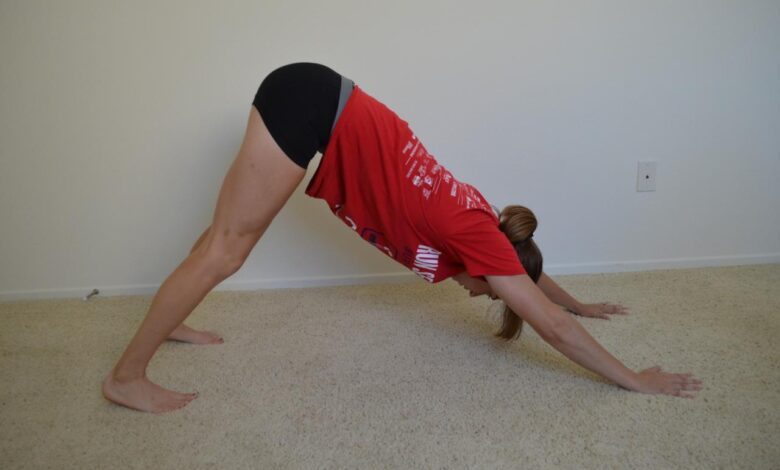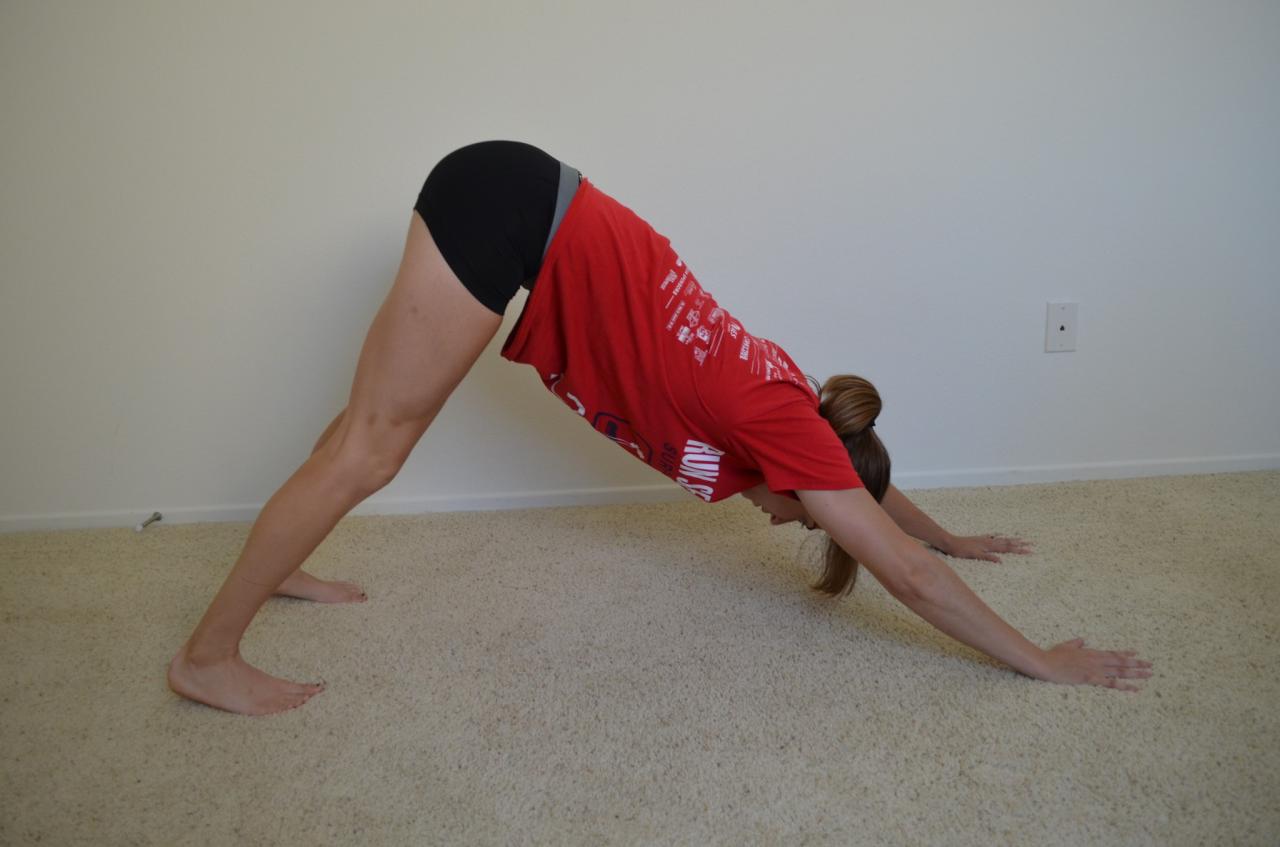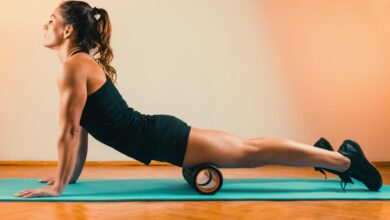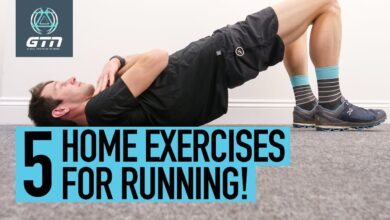
The Dos and Donts of Stretching as a Warm-up
The dos and donts of stretching as a warmup – The dos and don’ts of stretching as a warm-up are crucial for maximizing your workout benefits and minimizing injury risk. Stretching is often seen as an afterthought, but it’s a powerful tool that can enhance your flexibility, range of motion, and overall athletic performance.
By understanding the right way to stretch before exercise, you can prepare your body for the demands ahead and unlock a world of improved movement and wellbeing.
In this blog post, we’ll delve into the importance of stretching, explore the dos and don’ts of incorporating it into your warm-up routine, and uncover the secrets to maximizing its benefits. We’ll also uncover common stretching mistakes to avoid and provide tips for tailoring your stretches to your specific needs and goals.
So, let’s embark on this journey to discover the power of stretching and how it can transform your fitness experience.
Introduction to Stretching
Stretching is an essential part of any workout routine, especially as a warm-up. It helps prepare your body for physical activity by increasing flexibility, range of motion, and reducing the risk of injury.
Stretching before a workout is crucial, but sometimes we just don’t have the time. If you’re struggling to find even a few minutes, check out this article on what to do if you don’t have time to exercise.
Remember, even a short dynamic stretch routine, like arm circles or leg swings, can make a big difference in preparing your body for activity.
Benefits of Stretching
Stretching offers several benefits for your body, improving overall performance and well-being.
- Increased Flexibility:Stretching helps lengthen muscles and improve their elasticity, allowing for greater range of motion in joints. This increased flexibility is crucial for performing various movements and activities more efficiently.
- Improved Range of Motion:As muscles become more flexible, the range of motion in your joints also increases. This allows for smoother, more controlled movements, preventing strain and discomfort.
- Reduced Risk of Injury:Stretching before exercise helps warm up muscles and tendons, making them more pliable and less prone to tears or strains. By increasing flexibility and range of motion, stretching prepares your body for the demands of physical activity, reducing the risk of injury.
- Improved Posture:Tight muscles can contribute to poor posture. Stretching helps lengthen and loosen muscles, improving your posture and reducing the strain on your spine and joints.
- Reduced Muscle Soreness:Stretching after exercise can help reduce muscle soreness by improving blood flow and removing metabolic byproducts from the muscles. This can help you recover faster and feel better after your workout.
Dos of Stretching as a Warm-up

Stretching as part of your warm-up routine is crucial for preparing your body for physical activity. It helps improve flexibility, range of motion, and blood flow to your muscles, reducing your risk of injury. By incorporating stretches into your warm-up, you can enhance your performance and overall well-being.
Recommended Stretches
Stretching various muscle groups is essential for a comprehensive warm-up. Here are some recommended stretches, categorized by muscle group:
Neck
- Side Neck Stretch:Gently tilt your head to the side, bringing your ear towards your shoulder. Hold for 15-30 seconds and repeat on the other side.
- Chin Tuck:Slowly tuck your chin towards your chest, feeling a stretch in the back of your neck. Hold for 15-30 seconds.
Shoulders
- Shoulder Rolls:Roll your shoulders forward in a circular motion for 10-15 repetitions, then reverse the direction and roll backward.
- Cross-Body Shoulder Stretch:Bring one arm across your body, holding it with the opposite hand. Gently pull the arm towards your chest until you feel a stretch in your shoulder. Hold for 15-30 seconds and repeat on the other side.
Chest
- Doorway Stretch:Place your forearms on a wall or doorway at shoulder height, with your body slightly angled forward. Lean forward until you feel a stretch in your chest. Hold for 15-30 seconds.
- Cross-Body Chest Stretch:Bring one arm across your body and hold it with the opposite hand. Gently pull the arm towards your chest until you feel a stretch in your chest. Hold for 15-30 seconds and repeat on the other side.
Back
- Cat-Cow Stretch:Start on your hands and knees. As you inhale, arch your back and look upward. As you exhale, round your back and tuck your chin towards your chest. Repeat 5-10 times.
- Standing Back Stretch:Stand with your feet shoulder-width apart. Interlace your fingers behind your back and lift your arms as high as you can. Hold for 15-30 seconds.
Hips
- Pigeon Pose:Start on your hands and knees. Bring one knee forward and place it behind your wrist, with your other leg extended behind you. Lean forward until you feel a stretch in your hip. Hold for 30-60 seconds and repeat on the other side.
Remember, stretching before exercise is key, but it’s about quality, not quantity. Don’t bounce, hold stretches for 30 seconds, and focus on major muscle groups. It’s also important to remember that drastic weight loss, even at a young age, can have long-term consequences, as discussed in this article on the long term effects of losing weight even when youre young.
So, while stretching is crucial for injury prevention, a healthy approach to weight management is equally important for your overall well-being.
- Butterfly Stretch:Sit on the floor with the soles of your feet together and gently press your knees towards the ground. Hold for 30-60 seconds.
Hamstrings
- Standing Hamstring Stretch:Stand with your feet hip-width apart. Bend forward at the waist, keeping your back straight, and reach for your toes. Hold for 30-60 seconds.
- Seated Hamstring Stretch:Sit on the floor with your legs extended in front of you. Reach for your toes and hold for 30-60 seconds.
Calves
- Standing Calf Stretch:Stand facing a wall or chair, with your feet hip-width apart. Lean forward and place your hands on the wall or chair. Keep your back leg straight and your front knee slightly bent. Hold for 30-60 seconds and repeat on the other side.
Stretching before a workout is crucial, but it’s easy to go overboard. Remember to hold stretches for a comfortable duration, never bouncing, and focus on gentle movements. If you’re looking for a quick and energizing routine, check out this stretches energize morning 5 pose yoga fix routine.
It’s a great way to wake up your body and prepare for the day. Once you’ve incorporated stretching into your routine, you’ll notice a difference in your flexibility and overall well-being.
- Towel Calf Stretch:Place a towel around the ball of your foot and hold the ends with your hands. Keeping your leg straight, pull on the towel until you feel a stretch in your calf. Hold for 30-60 seconds and repeat on the other side.
Quadriceps
- Standing Quadriceps Stretch:Stand with your feet hip-width apart. Bend your right knee and bring your right foot towards your buttock, holding it with your right hand. Gently pull your heel towards your buttock until you feel a stretch in your quadriceps.
Hold for 30-60 seconds and repeat on the other side.
- Kneeling Quadriceps Stretch:Kneel on the floor with your right leg bent and your left leg extended behind you. Lean forward until you feel a stretch in your quadriceps. Hold for 30-60 seconds and repeat on the other side.
Proper Stretching Technique, The dos and donts of stretching as a warmup
- Hold Time:Hold each stretch for 15-30 seconds, or longer if comfortable. The goal is to feel a gentle stretch, not pain.
- Repetitions:Repeat each stretch 2-3 times, or more if needed.
- Breathing:Breathe deeply and evenly throughout each stretch. Inhale as you lengthen the stretch and exhale as you relax.
- Gradual Progression:Gradually increase the intensity and duration of your stretches as you become more flexible. Don’t push yourself too hard, especially when starting out.
- Listen to Your Body:Pay attention to your body’s signals and stop if you feel any pain. Stretching should be comfortable, not painful.
Don’ts of Stretching as a Warm-up
While stretching is beneficial for flexibility and range of motion, it’s crucial to understand the proper way to incorporate it into your warm-up routine. Stretching before a workout without adequately warming up your muscles can increase the risk of injury.
Here are some common stretching mistakes to avoid.
Holding Stretches for Too Long
Holding a stretch for an extended period can cause muscle fatigue and potentially lead to injury. The recommended hold time for a static stretch is typically 15-30 seconds. Holding it longer than that can put undue stress on your muscles, increasing the risk of tearing or strain.
It’s important to listen to your body and stop if you experience any pain.
Pushing Beyond Your Limits
Stretching should never be painful. If you feel any sharp or intense pain, stop immediately. Pushing yourself beyond your current range of motion can lead to muscle tears, sprains, or other injuries. Focus on gentle stretches that allow you to feel a mild tension, not pain.
Ballistic Stretching
Ballistic stretching involves bouncing or jerking movements during a stretch. This type of stretching can be dangerous because it can overstretch muscles and increase the risk of injury. It’s important to avoid ballistic stretching, especially before a workout. Instead, focus on controlled, static stretches.
Types of Stretches for Warm-up: The Dos And Donts Of Stretching As A Warmup
Choosing the right type of stretch for your warm-up is crucial for maximizing its benefits and minimizing the risk of injury. There are three main categories of stretches: static, dynamic, and active stretches, each with unique characteristics and effects on your body.
Static Stretches
Static stretches involve holding a stretch for a prolonged period, typically 15-30 seconds. These stretches are excellent for increasing flexibility and range of motion, but they are not ideal for warming up muscles. They are more effective for improving flexibility after a workout, when muscles are already warm.
Dynamic Stretches
Dynamic stretches involve controlled movements through a full range of motion. These stretches are ideal for warming up muscles, as they increase blood flow and prepare your body for activity.
- Arm circles:Slowly circle your arms forward and backward, increasing the range of motion as you warm up.
- Leg swings:Swing your legs forward and backward, keeping your core engaged and maintaining control.
- High knees:Bring your knees up towards your chest as you run in place, engaging your core and hip flexors.
- Butt kicks:Bring your heels towards your glutes as you run in place, engaging your hamstrings and glutes.
- Arm swings:Swing your arms forward and backward, keeping your core engaged and maintaining control.
- Walking lunges:Step forward with one leg, bending both knees to 90 degrees, and then step forward with the other leg, maintaining a controlled movement.
Active Stretches
Active stretches involve using your own muscles to move your body into a stretch position. These stretches are also ideal for warming up muscles, as they activate and engage your muscles.
- Plank:Hold a plank position, engaging your core, shoulders, and glutes.
- Bird dog:Extend your opposite arm and leg while maintaining a straight line from head to toe.
- Superman:Lie on your stomach and lift your arms and legs off the ground, engaging your back muscles.
- Side plank:Support your body weight on your forearm and feet, engaging your core and obliques.
Types of Stretches, Benefits, and Risks
| Type of Stretch | Benefits | Potential Risks |
|---|---|---|
| Static | Increases flexibility and range of motion | May decrease muscle power and agility, potential for injury if held too long |
| Dynamic | Warms up muscles, improves blood flow, increases range of motion | Minimal risk if performed correctly |
| Active | Warms up muscles, improves strength and stability, enhances core engagement | Potential for injury if performed incorrectly or without proper control |
Ending Remarks
Stretching is a vital component of a well-rounded fitness routine, and understanding the dos and don’ts of incorporating it into your warm-up can make all the difference. By focusing on proper technique, gradual progression, and listening to your body, you can harness the power of stretching to enhance your flexibility, range of motion, and overall athletic performance.
Remember, consistency is key, and even a few minutes of mindful stretching can have a profound impact on your body and your fitness journey.






